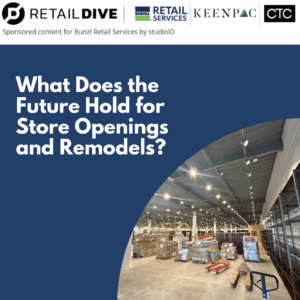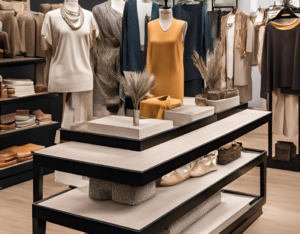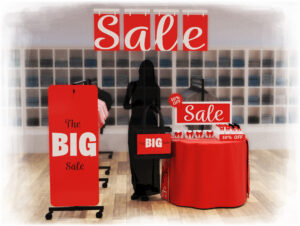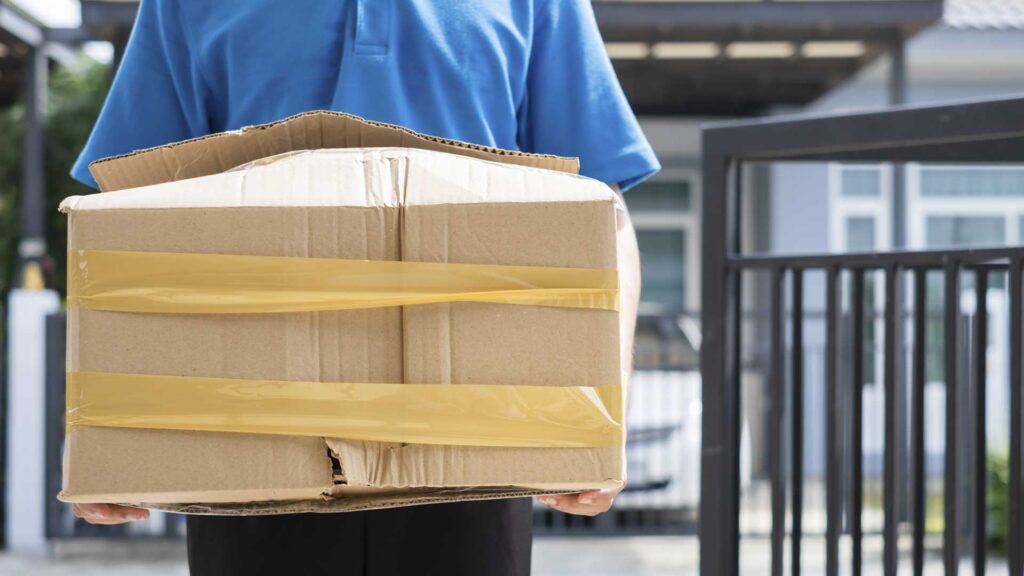
Most Common Retail Shipping & Box Packaging Mistakes
When it comes to retail shipping and box packaging, not all are created equal. Here are the top 4 mistakes we often see.
While retailers face challenges such as transit delays and customers who want immediate delivery, using proper packaging is one variable retail operations can control to help lower costs and ensure a better customer experience. Underestimating the importance of proper shipping boxes can cost a company thousands of dollars, if not more.
The challenge of successful shipping in today’s small mailing and parcel environment has accelerated at a pace well beyond that of the world of e-commerce volume.
What is the true cost within the ship-from-store environment? Are current packing and shipping materials truly providing the level of protection necessary? And ultimately, is your customer receiving their item in the condition they expect and with the full experience they deserve?
With the enormous increase in small parcel shipping volumes, arrival condition is paramount to the success of the process. SFS (ship-from-store) has only exacerbated the issue and simply can no longer be ignored.
With that said, here are the top 4 most common retail packaging mistakes:
1. Using Oversized Boxes
2. Packaging That Isn’t Strong Enough
3. Only Using Standard Box Sizes
4. Not Thinking Sustainably
#1 Retail Packaging Mistake: Using Oversized Boxes
#1
As a retail services company, we can attest that the most common mistake we see is using boxes that are too large, whether for products or shipping.
Why does box size matter?
Accurate size is one of the single most important factors in packaging for many reasons:
· More Economical Freight
· Lowered Damage Rates
· Less Filler Material and Waste
· Warehousing Costs
Economical Freight: one of the most obvious reasons drawbacks of utilizing packaging that is too large is cost. Larger boxes mean more expensive freight, both individually and in bulk shipments. Smaller boxes can be more densely compiled and shipped in higher quantities, saving money and lowering your environmental footprint.
Damages: The right size box can mean the difference between thousands of dollars in damaged shipments.
One estimate revealed that up to 34% of packaging-related returns are due to a damaged product and that replacing a damaged item can cost an eCommerce business up to 17x more than the original cost to replace it.
Less Filler and Waste: A box that is too large for the contents will have excessive “dead space,” causing the product to move around unsafely and require more void fill. We can all think of a time we received a package large enough to hold a television, only to find an object as small as a lightbulb inside… surrounded by handfuls of cushion. This filler is not only costly but contributes to unnecessary waste.
Warehousing Costs: Every inch matters when it comes to warehouse storage. You want to stretch your storage space as far as possible, and a major factor is the packaging. Utilizing smaller size boxes not only benefits retailers during shipping, but during the storage process as well.
#2 Retail Packaging Mistake: Packaging That Isn’t Strong Enough
Oversized boxes are a major contributor to retail product damages, but boxes that aren’t durable are another critical factor. Selecting cheap, flimsy boxes will reflect poorly on your brand and also cause more damaged shipments. A strong, quality box has lasting benefits in several ways.
Questions you should review before making a packaging decision:
· How much do the contents weigh?
· Will these packages be stacked while bundling, palletizing or warehousing?
· What other forces may your box be subjected to during shipping and handling?
First, let’s review how box strength is measured. The two most common methods for testing a box’s strength are the Edge Crush Test and the Mullen Burst Test.
The Edge Crush Test, or ECT, is a newer test developed to look specifically at how much force a corrugated material can withstand on its edges without crushing. The material is compressed top to bottom until it buckles. The most commonly used corrugated material is 32 ECT.
The Mullen test measures the force required to burst or rupture the face of a corrugated board, so a box rated at 200# can withstand 200 pounds per square inch of force applied directly to the linerboard on the face of the carton until it bursts.
So what do the ECT and Mullen Test mean and how should you apply them?
If you are stacking and palletizing your cartons, ECT generally provides a better measure of how well they will hold up in a stack. When shipping individual boxes that could endure rough handling, Mullen-tested cartons are a good measure.
Which packaging options are the best?
“With the variety of economy board grade options most readily available; 26#, 32#, 42# ECT grades, in addition to 100% fully recycled board, the cost of a box alone can become a major concern,” Bunzl Director of Business Development shares.
“Yet, in light of the additional challenges of stacking strength and puncture requirements, necessary consideration must be given to the higher strength and properties of 200# Mullen Test, or greater, board grades. Due to its high stacking strength and solid puncture resistance, 200# Mullen Test corrugated is one of the most desired, yet often overlooked alternatives available,” he continues.
“In today’s world of leveraging carton dimensions to the item being shipped in the small parcel environment, it is acutely critical to optimize the DIM’s to assure shipping costs are managed with a laser-beam focus.”
The most common solution to address this problem is by expanding the number of box sizes made available, which we talk more about below in #3.
#3 Retail Packaging Mistake: Only Using Standard Box Sizes
Another common error retailers make is falling into the trap of only using standard box sizes offered. Associates often rely on using the “suggested” box size, but there are various other options that should be considered as well.
Custom Packaging
One is working with a packaging specialist to develop custom sizes tailored to your products and your needs. These custom retail packages are made specifically for your contents, use and process. They are also knowledgeable in freight, logistics, and warehousing and can ensure you are operating at the most economical rate.
Multi-Depth or Variable-Depth Boxes
Another lesser-known, yet economical and workable solution is to consider a “variable-depth box.”
These multi-depth boxes are creased at predetermined intervals to allow for configuration to the specific desired height.
The contributing economies of SKU reduction, combined with the outbound freight savings, can offer overall unrealized cost savings.
One example of how this could work is rather than stocking a variety of box options, a multi-depth box configuration of 16” (l) x 16” (w) x 16” (h) – 14” – 12” – 10” – 8” offers 5 various height configurations in one (1) SKU.
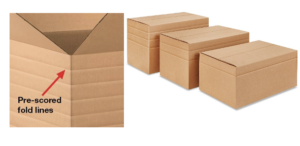
These Variable-Depth or Multi-Depth boxes are an under-utilized resource that offers a great way to ship in more optimized-sized packages.
#4 Retail Packaging Mistake: Not Thinking Sustainably
Many of the factors mentioned above not only improve a retailer’s packaging and shipping but have a positive impact on sustainability. But with new legislation and climate change effects emerging every day, those without a long-term plan for sustainability will soon find themselves behind the curve.
Large, oversized boxes, excess void filler, and damaged shipments from cheap packaging materials waste money for your business and have lasting negative effects on the environment.
Investing in right-sized, or custom packaging that results in more efficient transit and less waste is the right step for both your brand image and the environment.
Planning for long-term sustainability means asking questions such as, “Will this package be used again? Would my customer use this again if it were made differently? How much post-consumer waste does this have? Can we productively use the waste another way? Can we reduce the size/filler?”
As it’s been said, sometimes the right thing to do isn’t the cheaper thing to do. But brands that don’t make sustainable shifts could lose business in the long run. Drum.com shared that 59% of consumers say they will boycott brands that don’t address the climate change emergency.
If you’re unsure where to start, contact Bunzl Retail Services, and we can make recommendations that are customized to your business’s goals. We are packaging experts and have the resources to help reach your sustainability goals and increase your efficiency.
